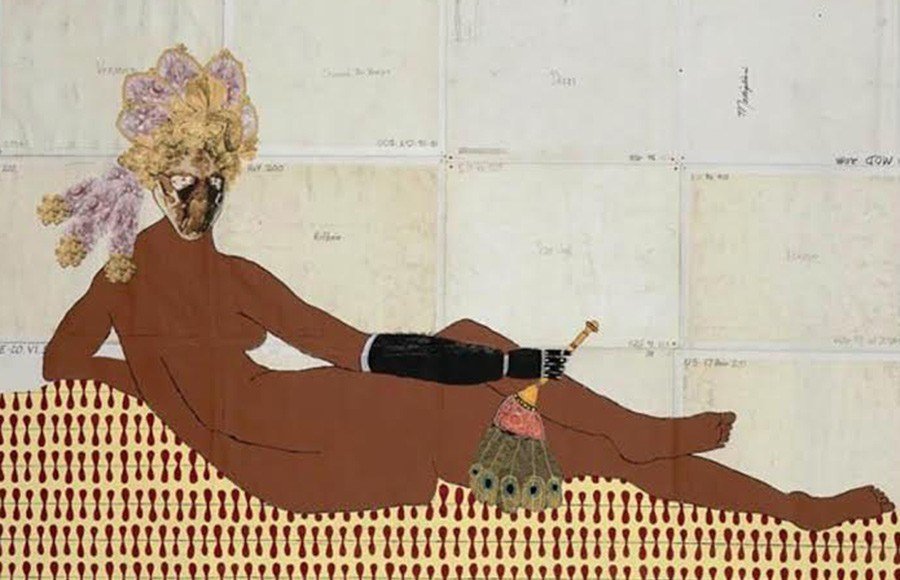
BY SARAH ELIZABETH ADLER | SENIOR STAFFLAST
This year marks the 25th anniversary of the Americans with Disabilities Act, and at San Francisco’s SOMArts cultural center, matters of disability, interactivity and accessibility are explored in DIS/PLAY, a large-scale group exhibition curated by Berkeley artist Fran Osborne.
Osborne, the recipient of a SOMArts Commons Curatorial Residency, has been working on the exhibition for more than a year. “My interest in artists with disabilities began in Southern California several years ago, when I saw a wonderful exhibition of work by blind photographers at the Museum of Photography in Riverside,” Osborne explained in an interview with The Daily Californian. “It remained with me as a fabulous exhibition which didn’t involve ‘pity’ or ever use the word ‘inspirational’ in its interpretive materials.”
DIS/PLAY, too, avoids the paternalism that so often emerges when cultural institutions (which favor the able-bodied and neurotypical) attempt to engage with disability. The exhibition is ambitious in scope: It features work by 29 exhibiting artists, four performing artists and six participating organizations.
The works are numerous and all are notable. There’s “Ever After: Venuses of the Yelling Clinic,” a series of paintings by Katherine Sherwood, a professor of art practice at UC Berkeley, that reimagines the female nude as a point of inquiry into depictions of disability. Visitors should be sure to seek out a quilt by disability rights activist Corbett Joan O’Toole that honors the work and identities of well-known disabled women of color, including Audre Lorde, Gloria Anzaldúa and Amy Tan. Also of note are the prints and mixed-media works of Casper Banjo, a Bay Area artist with epilepsy who died in 2008 after being shot by Oakland police.
In addition, there are several works that engage viewers in an interactive and perhaps unfamiliar way. “Low-tech interactives are a cool way of engaging audiences of all ages and of breaking down some of those invisible barriers that prevent people from even moving through the door,” Osborne said. “Somehow, the invisible barriers that exist in attending cultural facilities remind me of the barriers people with disabilities face every day when they are ignored, sidelined, pitied, stared at or expected to be inspirational.”
Opportunities for audience interaction include pieces such as “Safe To Touch,” a series of wall-mounted works by the artists of San Leandro’s Artful Steps program. A sign next to the series urges visitors: “Take some slow time to explore our tactile art installation.” Below this printed sign, a duplicate placard is hung — this one is in braille. At DIS/PLAY, details such as this one make it is clear that the idea of accessibility has been embraced to the greatest possible extent.
“Thinking around access issues is not easy,” Osborne acknowledged. “We — myself and all the staff at SOMArts — tried in small ways to be inclusive and sensitive to access and accommodation needs from the outset.”
Examples include the wall-hung works, which were mounted an inch lower than SOMArt’s standard to accommodate different eyelines. The “Safe To Touch” exhibit has dual sets of labels (one printed, one in braille) and all other labels use a text size larger than usual. Interpretation in American Sign Language was also offered at all accompanying events, including the opening reception, a performance by AXIS Dance and the closing reception, which will take place April 23.
“It’s kind of ironic that, at a time when many curators and arts administrators are talking about getting art out of the formal gallery and into nontraditional spaces, people with disabilities may still be banging on the gallery door wanting to get into that elusive public space and spotlight,” notes Osborne. “If you happen to be nonwhite or have a cognitive disability things are even more challenging.”
Osborne is right. When it comes to combating ableism in the arts and elsewhere, there is still much progress to be made. DIS/PLAY proves that for artists and audiences alike, this process can be at once a potent, poignant and playful one.
DIS/PLAY will be showing at SOMArts gallery in San Francisco until April 23.
----
Sarah Adler covers visual art. Contact her at sadler@dailycal.org.
